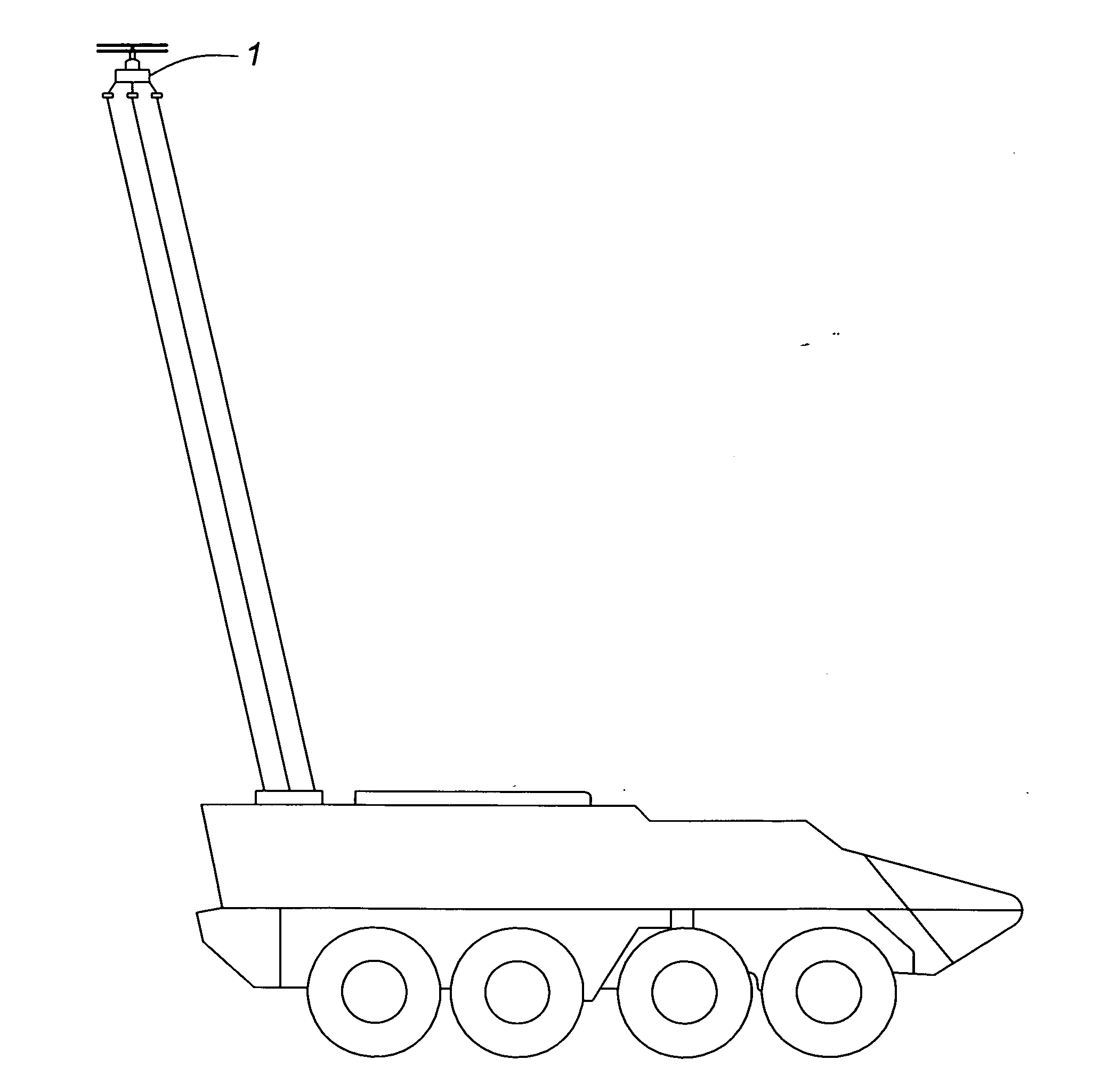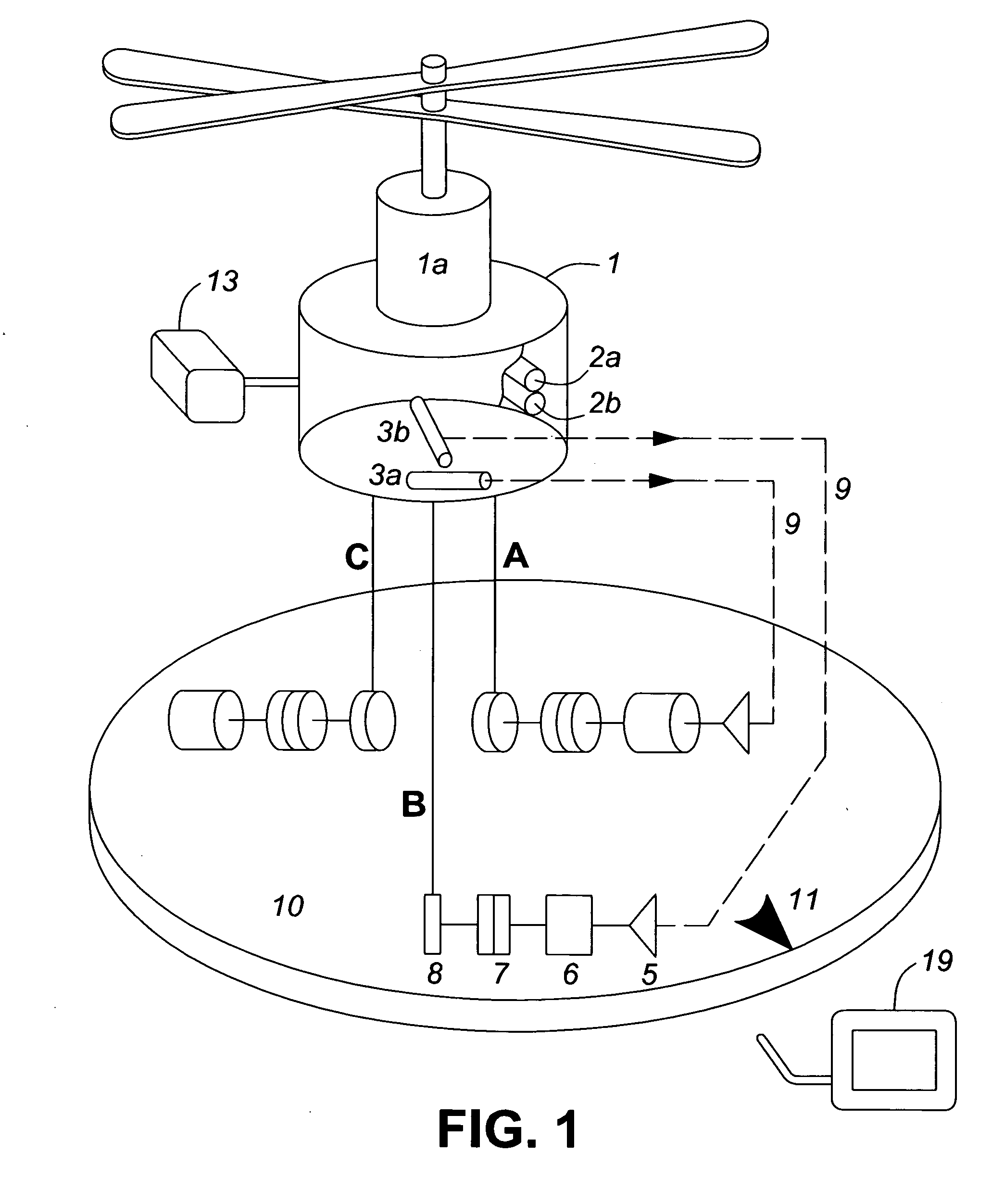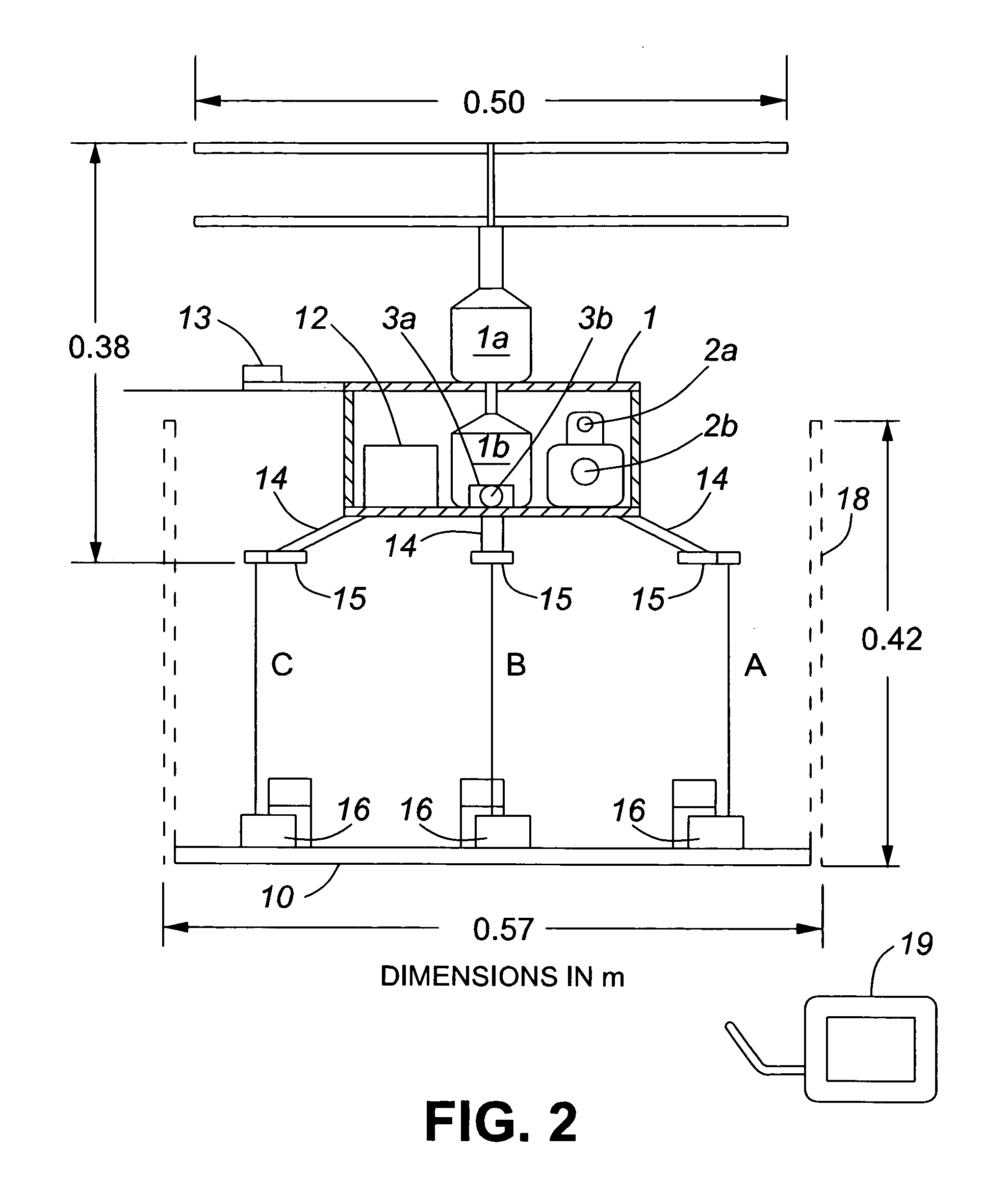Airborne, tethered, remotely stabilized surveillance platform
a surveillance platform and remote stabilizer technology, applied in vertical landing/take-off aircraft, process and machine control, instruments, etc., can solve the problems of observation sensors not being able to provide a full-circle view of the surrounding terrain, positioning devices not suitable for maintaining surveillance platforms in horizontal positions, and sensor suites lacking a vertical control loop
- Summary
- Abstract
- Description
- Claims
- Application Information
AI Technical Summary
Problems solved by technology
Method used
Image
Examples
Embodiment Construction
[0019]The functional schematic of airborne surveillance platform 1 is illustrated in FIG. 1. Two counter-rotating propellers are driven by electric motor 1a, which receives the required energy from an on-board battery or from a power supply in the vehicle via the conductive tethers. With clutches 7 disengaged, three tethers A, B and C are paid out by reels 8 until the platform reaches an altitude determined by the length of tether C. The reel drives are 120° degrees apart. At this stage, all three clutches 7 are engaged and the tethers are under tension. While the length of tether C remains fixed, the lengths of tethers A and B are adjusted by means of two positional servo loops as follows. First, the error signal from level sensor 3a is transmitted over wireless link 9 to amplifier 5 which drives motor 6 and reel 8, until the length of tether A is adjusted so that the error signal is minimized and level sensor 3a is horizontal. This sequence of events is then repeated by the servo ...
PUM
 Login to View More
Login to View More Abstract
Description
Claims
Application Information
 Login to View More
Login to View More - R&D
- Intellectual Property
- Life Sciences
- Materials
- Tech Scout
- Unparalleled Data Quality
- Higher Quality Content
- 60% Fewer Hallucinations
Browse by: Latest US Patents, China's latest patents, Technical Efficacy Thesaurus, Application Domain, Technology Topic, Popular Technical Reports.
© 2025 PatSnap. All rights reserved.Legal|Privacy policy|Modern Slavery Act Transparency Statement|Sitemap|About US| Contact US: help@patsnap.com



